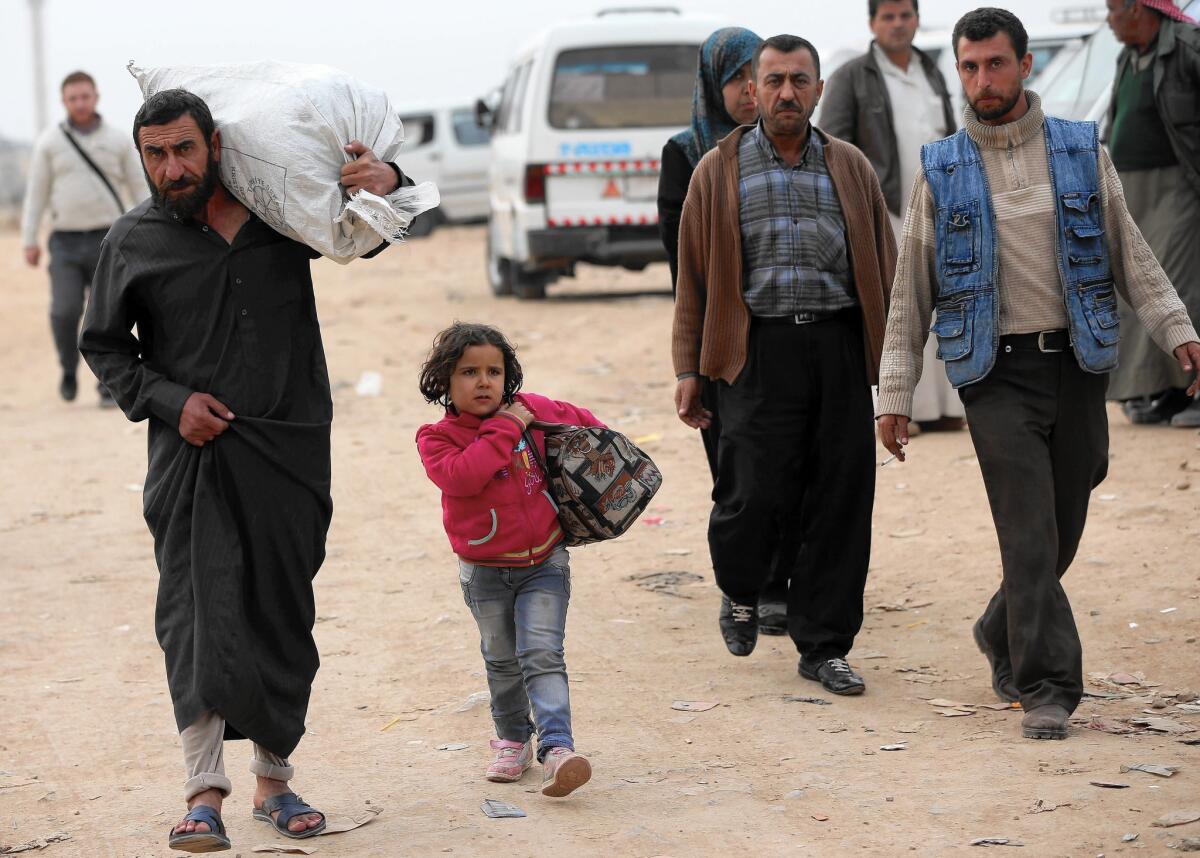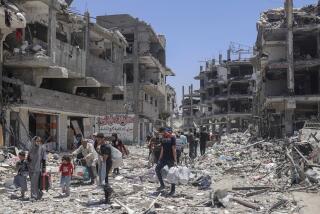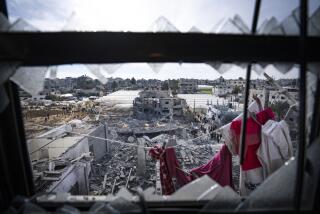Aleppo, Syria, could soon be under siege by government troops

Syrian troops are on the brink of surrounding the rebel-held portion of Aleppo, a major setback for the opposition, which has increasingly found itself on the defensive and losing territory in the war.
The outgunned antigovernment fighters are pessimistic about their ability to stave off an advance by troops in the northern city. A siege would cut off an estimated half a million people from access to food, medicine, fuel and other basic necessities.
For more than two years, Aleppo, once Syriaâs commercial hub, has been divided between rebel and government forces. Only a small stretch of land, less than a mile wide, and one road connect the opposition-held portion of the city to the countryside and highway leading to Turkey.
âTo retake the areas, we need supplies and bullets and arms and mortars; without that we canât do it,â said Aadil âAbu Assadâ Nasir, the Aleppo military commander for the Islamic Front, one of the major rebel groups. âItâs a matter of being sick and not having medicine.â
In early October, Syrian forces cut off one of only two open roads leading into rebel territory. Government airstrikes are a regular danger on the remaining open route.
On Tuesday, local journalists reported that 20 people, several of them children, were killed when two barrel bombs struck cars and buses along the road. Video from the aftermath showed a familiar scene of scorched bodies and burning shells of vehicles.
Residents and rebels in Aleppo have been worried for months about the prospect of being surrounded by government forces. During the summer, dozens of people a day fled the city, fearing a siege was imminent.
Those still in Aleppo either have nowhere to go or lack the money to leave.
âAll Aleppo residents here know that they can go to sleep and wake up the next morning to find Aleppo suddenly under siege,â resident Ali Hamdi said. âIf you ask a little kid in the street, he knows and he will tell you that Aleppo could be besieged. It is a clear possibility.â
The fate of Aleppo has at times reflected the fortunes of the rebels and the trajectory of the conflict, with the two sides taking turns holding the upper hand. Last year it was the rebels who briefly had the government-held neighborhoods surrounded, cutting off supply routes for both the military and civilians.
âAleppo is very important,â said Col. Abdulrazzaq Abu Bilal, a commander with the Islamic Front. âIt is the main outlet for the Syrian revolution in northern Syria.... It is important militarily and strategically.â
For more than two years, the government has employed siege tactics â what the opposition calls âkneel or starveâ â to retake or pacify areas it was unable to seize militarily.
Early this year, the government reached truces with opposition-held communities around Damascus, the capital, and in Homs, Syriaâs central city, once called âthe capital of the revolution,â which had been under siege for months. Before the deals were made, some residents had died for lack of food or medicine, local activists reported.
The cease-fire agreements were seen as a blow to the rebels and a victory for President Bashar Assad in that they pacified individuals and groups who had called for his ouster. Whereas the government portrayed the deals as part of a broader effort at national reconciliation, the opposition viewed them as an effort to undermine its support among the population.
The United Nations estimates that nearly 250,000 Syrians are cut off from food and other necessities, mostly by the government but also by rebels. Valerie Amos, the U.N. humanitarian chief, has called the use of such sieges a âweapon of war.â
Hamdi, who manages a nongovernmental organization for children based in Aleppo, said his and other humanitarian groups had been stockpiling food and medicine in preparation for a siege. Residents there are frightened, having seen what happened elsewhere. In some places, trapped residents resorted to eating leaves, cats and dogs to avoid starvation.
âPeople have grown accustomed to the barrel bombs; we are nearing a year of this regular bombardment,â Hamdi said, referring to the near-daily government airstrikes using a particularly indiscriminate weapon. âBut people fear the thought of siege, the thought of hunger, the thought of being cold â this is what people fear the most.â
The rebels are also getting ready, storing extra ammunition in case they need it to break a siege from within the city, said Col. Abu Bilal.
Rebels in the countryside are also preparing. They have begun digging a 2.5-mile-long tunnel â a relatively recent tactic adopted by the rebels â to smuggle people out of the city, said Nasir, the Islamic Front commander
It will take at least a month to complete.
More to Read
Sign up for Essential California
The most important California stories and recommendations in your inbox every morning.
You may occasionally receive promotional content from the Los Angeles Times.











